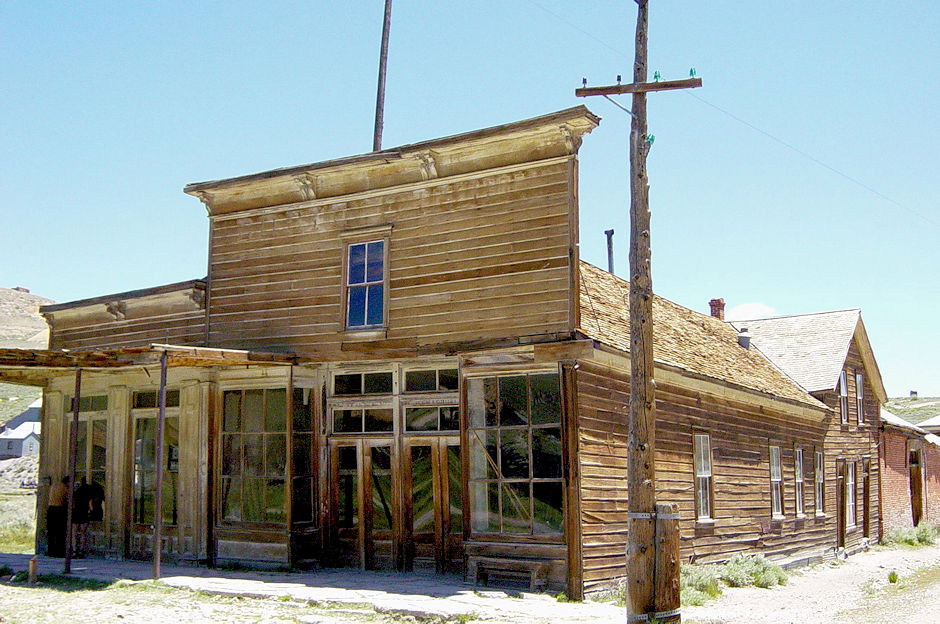
Land Office, Power Company Office, Bodie Store, Wheaton and Hollis Hotel - Photo by Daniel Mayer - Own work, CC BY-SA 4.0, via Wikimedia Commons - Link
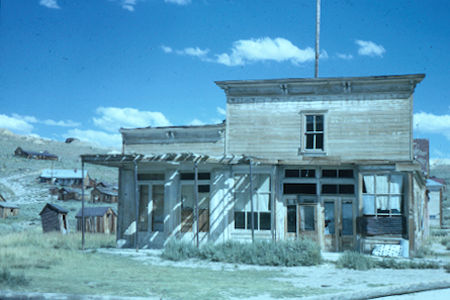
Land Office, Power Company Office, Bodie Store, Wheaton and Hollis Hotel - 1962
In 1885-86, this building served as the United States Land Office. The Land Office was established on January 5th, 1879 and was moved here later. It’s purpose was to handle the applications for the purchase of the government land, and to receive the money for those lands. H. Z. Osborne was the first ‘Receiver of Public Monies for the Land Office, and proved to be quite crooked.
When purchasing timber land, an ad had to be placed in a local paper for the public to see. Osborne allegedly waited until he purchased a portion of the Bodie Free Press, then placed 32 ads at once. Not only that, he charged $15 for each ad, which he then placed for only $10 each. He continued to do this until the Standard (another paper in the area) published a line at the top of their advertising page, stating that ads were just $10. Osborne quickly stopped charging his amount.
In order to keep things honest, Osborne’s partner in the Free Press, E. R. Cleveland, was appointed Registrar and Osborne then became Receiver. However, they still had a conflict of interest. People would come to purchase land, and would likely place the ad in the Free Press simply because it was quick and easy. When the Land Office business slowed down in the 1880’s, the Free Press suffered great losses. Osborne resigned from his position, and H. L. Childs took the spot.
In 1885, M. J. Cody (the father of Ella Cain) was appointed Receiver, and at some point, a Walker was appointed Registrar (possibly Dr. David Walker). In 1886 when the Land Office was ordered to relocate to Independence, Walker and Cody stayed in Bodie and gave up tier positions.
In later years this building served as the office for the Power Company, the Bodie Store and finally the Wheaton and Hollis Hotel.
from bodie.com
https://www.facebook.com/photo/?fbid=888801217799435&set=a.477903015555926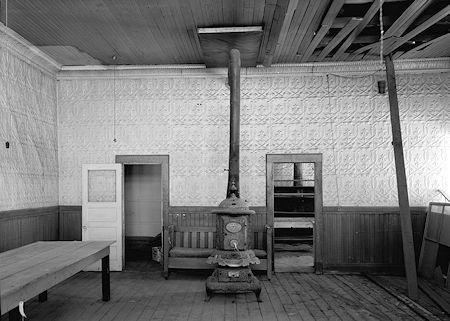
Interior, showing stove and metal wall covering - U. S. Land Office Building
by Ronald Partridge 1962 - Library of Congress
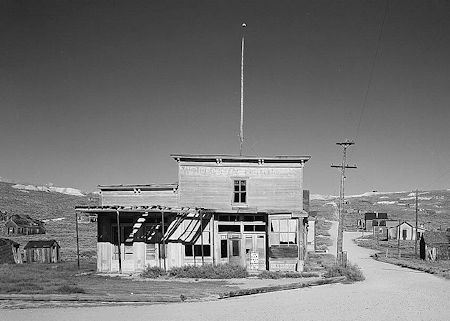
Exterior, general view, west facade - U. S. Land Office Building
by Ronald Partridge 1962 - Library of Congress
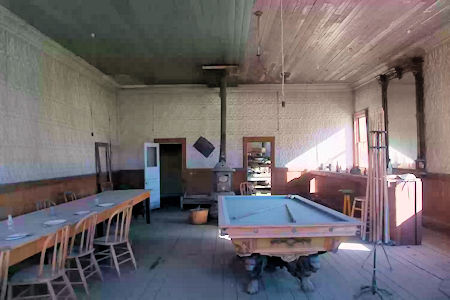
Inside Wheaton and Luhrs Hotel - September 2016
by King of Hearts, CC BY-SA 4.0, via Wikimedia Commons
Click here for some pictures inside the Wheaton and Hollis Hotel by Mike “Mish” Shedlock.

What’s in a name?
If you visited Bodie prior to late 2015, your self-guided brochure would have named the building at the northeast corner of Main and Green Streets as, “Wheaton and Hollis Hotel.” Today, the brochure, revised in 2015, calls the building “Wheaton and Luhrs.” The change was prompted by some interesting research into a building that was a store, hotel, office and more.
Nick Gariaeff, author of “Discovering Bodie,” was curious about historic photos of the building’s signs. His investigation ended up revealing the true name of the building and a little history of the original owners. George H. Wheaton, James Page and Nicholas C. Luhrs, recorded a general business partnership in Bodie in 1879.
They bought a store on Main Street and Standard Avenue, which had been previously owned by Silas B. Smith. Their new store was named, “Page, Wheaton and Co.” This company eventually bought the property at the northeast corner of Main and Green streets. They added the brick part of the structure and used it as a warehouse.
James Page left the partnership after a few months and started another store nearby. Gariaeff’s research revealed that Wheaton and Luhrs were “absentee owners,” with headquarters in San Francisco. “Mono County taxes in 1879 indicated that Wheaton and Luhrs had $17,000 worth of merchandise.”
By 1881, the partners had half a dozen properties in Bodie, but by 1883 were only paying taxes on the store at the corner of Main and Green streets. In 1883, the company’s tax records showed the property as a store and Wells Fargo office. That same year, Luhrs died in San Francisco. By 1886, the building was referred to as the “Bodie Store.”
Gariaeff suspects that the “Wheaton & Luhrs” sign was painted over with “Bodie Store” about this time. “The old sign was only visible for about three years until fading white paint revealed it many years later,” states Gariaeff in his book. So where did Hollis come from? No one is really sure, but the overlapping of the signs may have caused someone to perceive the names as “Wheaton & Hollis.” Yes, there were some people named Hollis around Bodie, but no one by that name was connected with the store.
In 1885-1886, the building was a U.S. Land Office with Michael J. Cody appointed by President Grover Cleveland as Receiver of Public Moneys. J.S. Cain bought the building in 1898. By 1910, it became offices for the hydroelectric company that brought electricity to Bodie from Lundy Canyon.
Finally, when the Clinton-West Company came to town in the 1920s, the building became a hotel and boarding house run by Josie Pearl, who was known for her cooking and her side business of mining. “The Pearl Inn,” and “Pearl Hotel,” were names for the building during that time period.
Today, the building delights the many visitors who peer in the windows to see a hotel sign, trunks, an old phone switchboard, a billiard table in the bar area and a fully stocked kitchen. On the Green Street side, one can glimpse equipment from an old assay office. And, in the old brick section, the electrical equipment inside dates to the late 1930s when the Roseklip Company worked the tailings of Bodie’s mines for the last time.
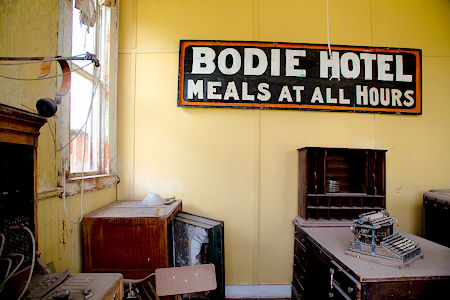
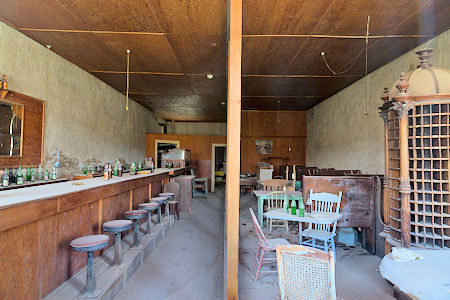
_spfspfw450.jpg)